
Evergreen small hardy trees ensure that the garden does not look too bare in winter. Some also have colored fruit decorations in winter, which increases their attractiveness.
In a nutshell
- many evergreen conifers grow very large in their original form
- Dwarf varieties stay small
- many of the trees are pruning tolerant or slow growing
- many evergreen trees are poisonous
Table of contents
- Evergreen trees from A – E
- G – H
- J-K
- L – S
- Hardy evergreen trees with Z
- frequently asked Questions
Evergreen trees from A – E
Occidental Tree of Life (Thuja occidentalis)

The thuja is as hedge plant very well known and used in many gardens. However, it is not very drought tolerant.
- Growth: columnar, from 2 m high, if not pruned up to 15 m
- Flowers: March to May, rather inconspicuous red
- fruits: forms cones
- Location: sunny to semi-shady
- Soil: moist but well-drained
- Care: keep moist cut if necessary, do not transplant when old
book (Buxus)

The boxwood is not only suitable as a low fence for beds - grafted onto a half trunk, it also grows as a small tree.
- Growth: spherical, height depends on the substrate
- Flowers: March, inconspicuous
- Fruits: inconspicuous, from September
- Location: sunny to shady
- Soil: moist but not wet
- Care: susceptible to dieback and the moth, therefore take good care, water regularly, fertilize and cut
European yew (taxus baccata)

The native yew likes to grow in the shade of other trees. It has become rare in our forests, but it is often planted in parks.
- Growth: more than 10 m high without pruning, slow-growing
- Flowers: from March, inconspicuous
- Fruits: red, birds like to eat them
- Location: shady
- Soil: rich in nutrients, permeable
- Care: very tolerant of pruning, fertilize in spring, do not allow to dry out
G – H
Common juniper (Juniperus communis)
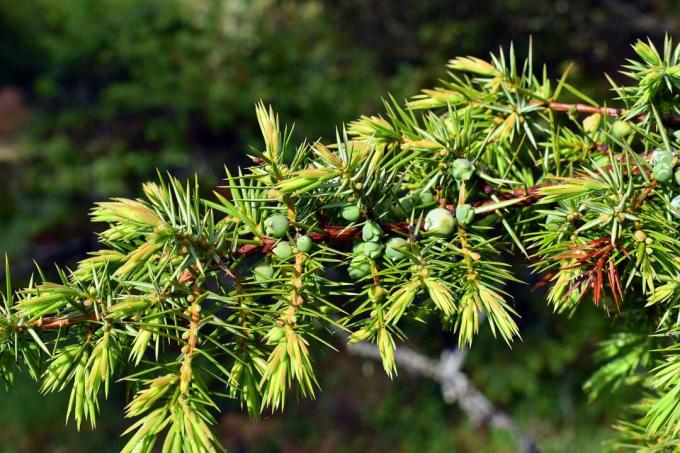
The native, common juniper actually grows up to 8 m high. However, the plant grows very slowly and the 'Compressa' variety only reaches a height of one meter.
- Growth: columnar
- Flowers: from April, inconspicuous
- Fruits: small, blue cones
- Location: sunny to semi-shady
- Soil: permeable, dry
- Care: hardly any care required
Bristlecone Pine (Pinus aristata)
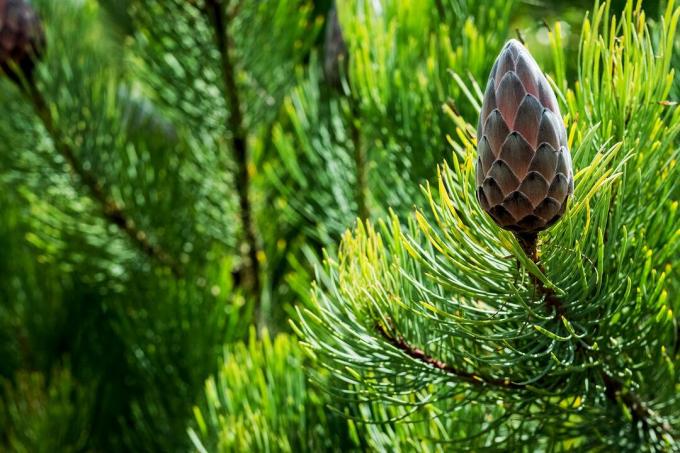
White resin flakes on the needles are typical of the bristlecone pine. Pines actually have quite long needles, but those of the awned pine are short.
- Growth: slow-growing, up to 3 m high
- Flowering: July to August
- Fruits: cones from September
- Location: sunny, airy
- Soil: permeable, dry
- Care: easy to care for, heat and drought tolerant
Hinoki cypress (Chamaecyparis obtusa)
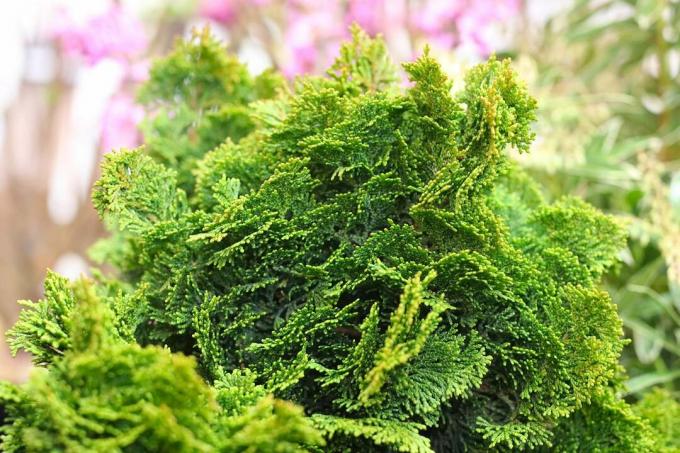
The small varieties of the hinoki cypress are even suitable for the tub culture. The yellow needles are particularly interesting.
- Growth: bushy, slow-growing, up to 1 m tall
- Flowering: Spring, inconspicuous
- Fruit: red cones, later turn brown
- Location: sunny to semi-shady
- Soil: rich in nutrients, permeable
- Care: easy to care for, but fertilize and water regularly in the bucket
J-K
Japanese Yew (Taxus cuspidata)

The Japanese yew is very similar to the European one. However, it remains smaller.
- Growth: shrub-like, growth height depends on cut and variety
- Flowers: from March, yellow
- Fruits: red
- Location: sunny to shady
- Soil: rich in nutrients, permeable, moist
- Care: easy to care for, very tolerant of pruning, water and fertilize from time to time
A notice: The 'Nana' variety only grows to a height of 2 to 3 metres.
cherry laurel (Prunus laurocerasus)
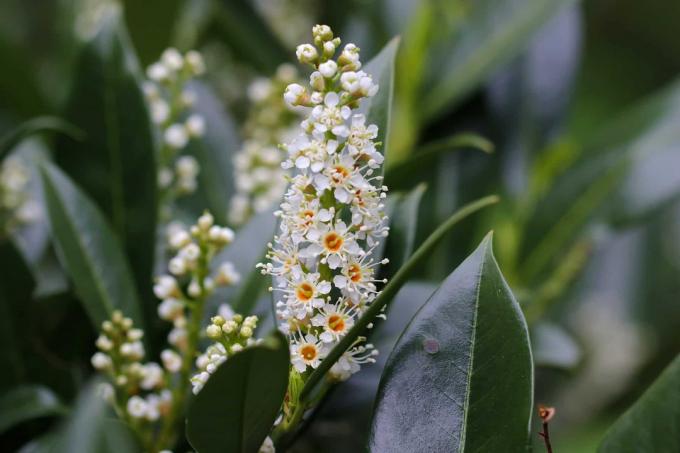
The cherry laurel is rarely cultivated as a free-standing tree. It is better known as a hedge plant.
- Growth: 2 to 4 m high
- Flowers: from May, white
- Fruits: black berries, from August
- Location: sunny to semi-shady
- Soil: not too dry
- Care: mainly easy to care for, fertilize a little, water only in persistent dryness
Korea fir (Abies koreana)
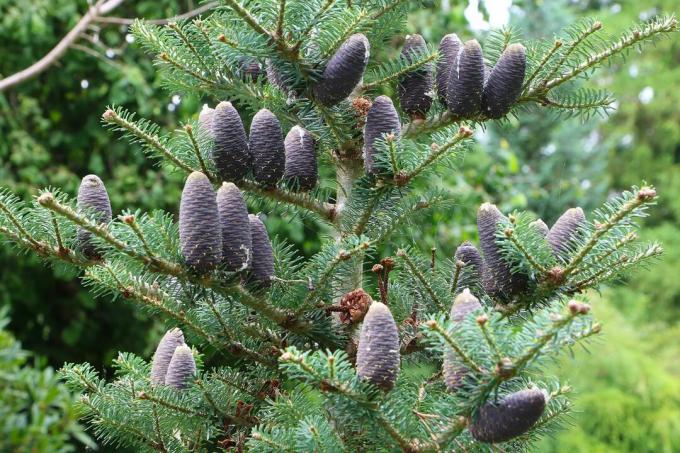
The Korean fir is actually very large, but there are now also dwarf varieties that remain considerably smaller.
- Growth: 5 to 8 m in height
- Flowers: from May, violet and yellow, but small and inconspicuous
- Fruits: blue cones
- Location: sunny to semi-shady
- Soil: nutrient-rich, moist
- Care: easy care
L – S
Lawson's false cypress (Chamaecyparis lawsoniana)

In its original form, the cypress grows up to 50m high. However, there are now several dwarf varieties such as: 'Minima' and 'Gnome'.
- Growth: Dwarf forms up to 2 m high
- Flowers: April, inconspicuous
- Fruits: cones
- Location: sunny to semi-shady
- Soil: rich in nutrients
- Care: keep moist
holly (Ilex)
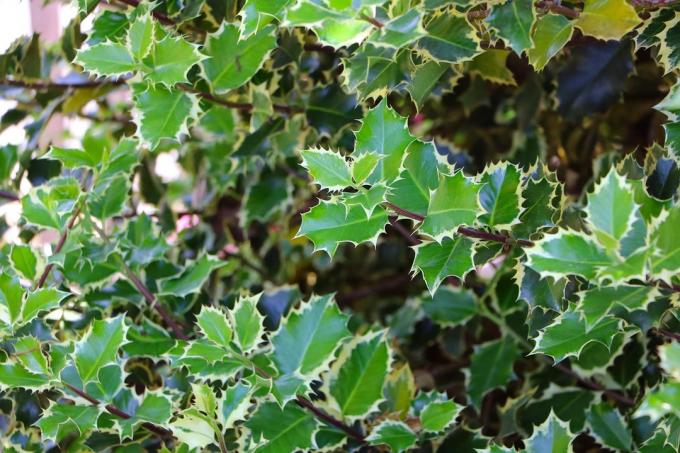
Bribe in winter the evergreen holly because of their red berries, numerous of which stick to the tree.
- Growth: 3 to 10 m high, depending on the variety, slow-growing
- Flowers: from May, white
- Fruits: from autumn, red
- Location: semi-shady to shady
- Soil: not too dry, slightly acidic
- Care: do not let dry out, mulch
A notice: Holly branches are often used as Christmas decorations.
Hardy evergreen trees with Z
Dwarf Balsam Fir (Abies balsamea 'Nana')
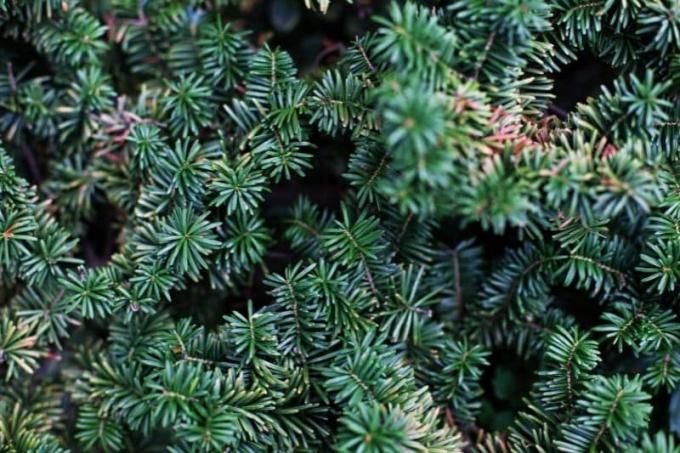
This tree grows more in width than in height. The needles are comparatively short, which makes the growth appear very dense.
- Growth: up to 1 m in height
- Flowers: from April, inconspicuous
- Fruits: brown cones
- Location: sunny to semi-shady
- Soil: rather moist, rich in nutrients
- Care: keep moist, fertilize from time to time
dwarf pine (Pinus mugo var. pumilio)

Because of its low stature, this pine is also called the creeping pine. It is particularly suitable for small gardens.
- Growth: up to 150 cm high
- Flowers: from May, yellow and pink
- Fruits: blue cones
- Location: sunny to semi-shady
- Soil: not too dry, permeable
- Care: easy care
Dwarf cork fir (Abies lasiocarpa)
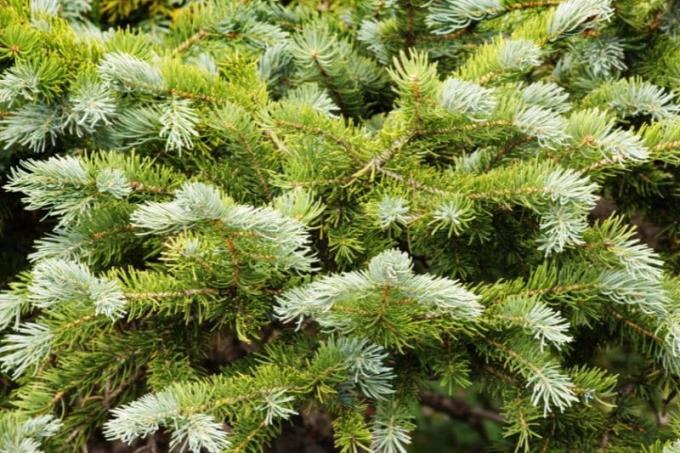
The 'Compacta' variety in particular remains small in growth and is also suitable for gardens with less space. The silver-grey needles of this evergreen small and hardy tree grow very densely and offers sufficient protection.
- Growth: up to 3 m in height
- Flowers: from May, inconspicuous
- Fruits: brown cones in autumn
- Location: sunny to semi-shady
- Soil: not too dry, permeable, rich in nutrients, acidic
- Care: tolerates pruning, water from time to time, fertilize in spring
frequently asked Questions
It is very important to water the plants from time to time in winter. When the ground is frozen, the evergreen trees find it difficult to absorb water, although they continue to evaporate moisture through the needles. Sometimes they can dry out.
With the evergreens There are many poisonous species of conifers. These include, for example, the holly and the yew. In principle, caution is advisable with all fruits of coniferous trees.
For most evergreen trees, this doesn't make sense. Many are difficult to sprout again from the old wood. Regular pruning every year is better. An exception are the species that can also be maintained as hedges, they are very well tolerated by pruning.
